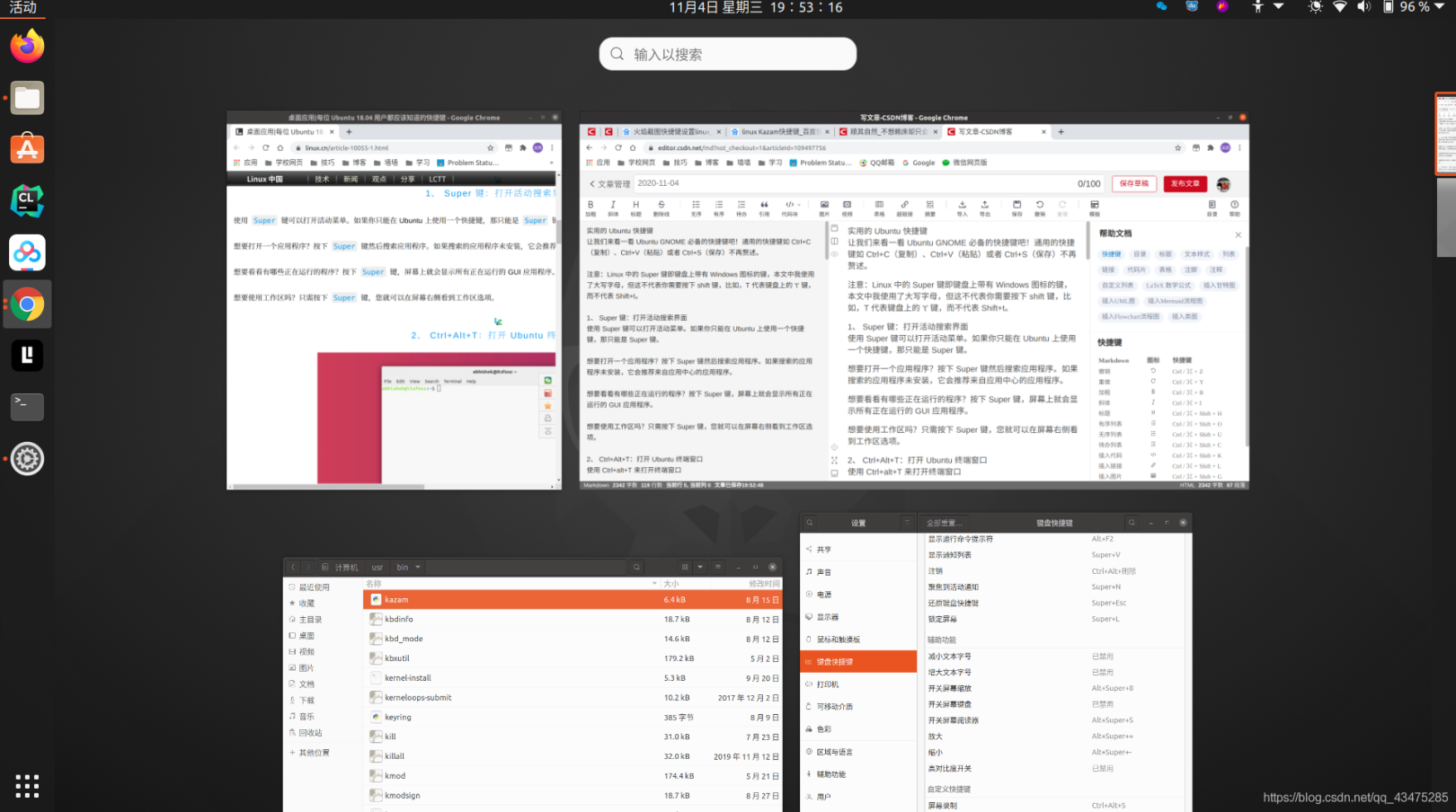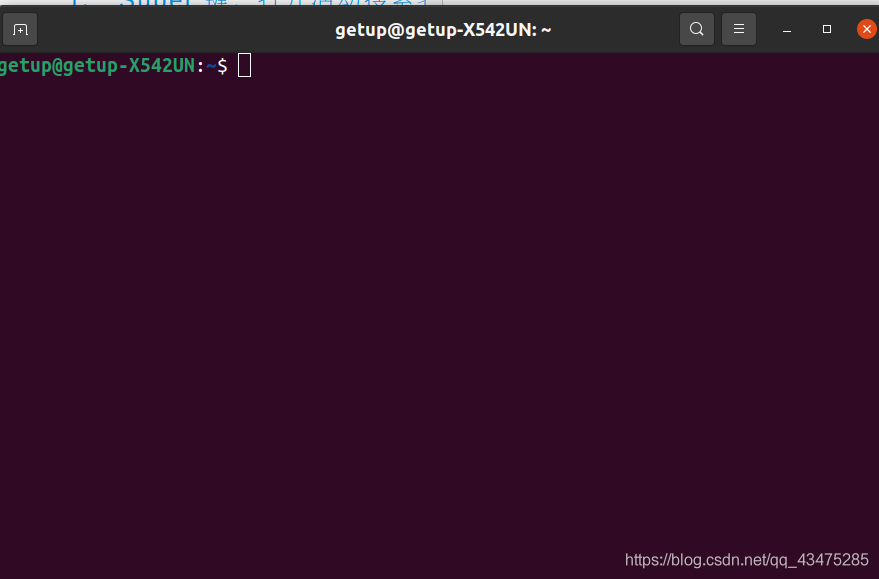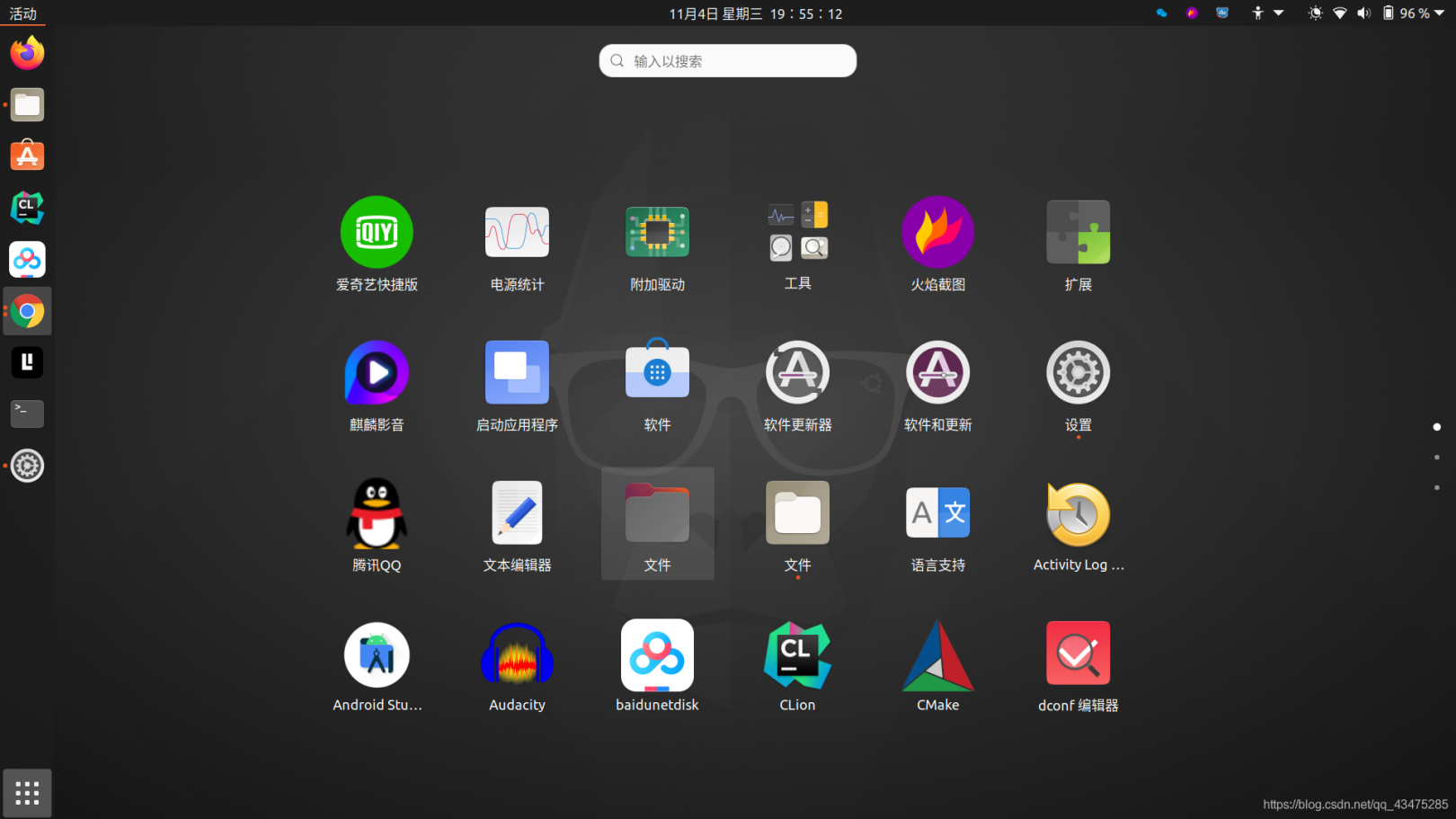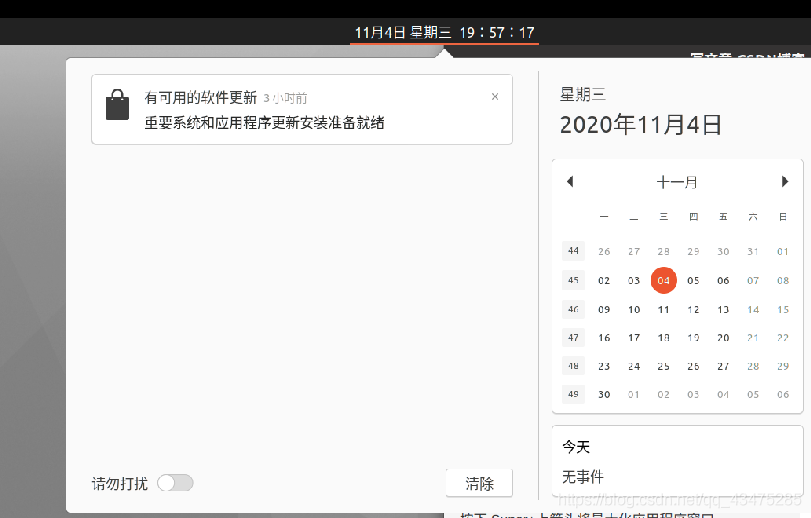Practical Ubuntu shortcut keys for linux
Common shortcut keys such as Ctrl+C (copy), Ctrl+V (paste) or Ctrl+S (save) will not be repeated.
Note: The Super key in Linux is the key with the Windows icon on the keyboard. I used capital letters in this article, but this does not mean that you need to press the shift key. For example, T stands for the't' key on the keyboard instead of Represents Shift+t. ###
1、 Super key: Open the active search interface##
Use the Super key to open the active menu. If you can only use one shortcut key on Ubuntu, it can only be the Super key.
Want to open an application? Press the Super key and search for applications. If the searched application is not installed, it will recommend the application from the application center.
Want to see what programs are running? Press the Super key, and all running GUI applications will be displayed on the screen.
Do you want to use the workspace? Just press the Super key, and you can see the workspace options on the right side of the screen.

2、 Ctrl+Alt+T: Open Ubuntu terminal window##
Use Ctrl+alt+T to open a terminal window
Use Ctrl+alt+T to open a terminal window
To open a new terminal, you only need to use the shortcut key Ctrl+Alt+T. This is my favorite keyboard shortcut in Ubuntu. Even in many of my FOSS tutorials, when I need to open a terminal window, I will mention this shortcut.

3、 Super+L or Ctrl+Alt+L: lock screen##
Locking the screen when you are away from your computer is one of the most basic security habits. You can use the Super+L shortcut instead of tediously tapping the upper right corner of the screen and selecting the lock screen option.
Some systems also use Ctrl+Alt+L to lock the screen.
4、 Super+D or Ctrl+Alt+D: show desktop##
Press Super+D to minimize all running application windows and display the desktop.
Pressing Super+D again will reopen all running application windows, as before.
You can also use Ctrl+Alt+D for this purpose.

5、 Super+A: Display application menu##
You can open the application menu in Ubuntu 18.04 GNOME by clicking the 9 dots in the lower left corner of the screen. But a faster method is to use the Super+A shortcut key.
It will display the application menu, where you can view or search for the applications installed on the system.
You can use the Esc key to exit the application menu interface.

6、 Super+Tab or Alt+Tab: Switch between running applications##
If you are running more than one application, you can use the Super+Tab or Alt+Tab shortcut to switch between applications.
Hold down the Super key and press the Tab key to display the application switcher. While holding down Super, continue to press the Tab key to select between applications. When the cursor is on the desired application, release the Super and Tab keys.
By default, the application switcher moves from left to right. If you want to move from right to left, you can use the Super+Shift+Tab shortcut.
Here you can also use the Alt key instead of the Super key.
Tip: If there are multiple application instances, you can use the Super+` shortcut key to switch between these instances.
7、 Super+arrow: move window position##
This shortcut key is also applicable to Windows systems. When using an application, press Super+Left Arrow, the application will fit to the left edge of the screen and occupy the left half of the screen.
Similarly, pressing Super+Right Arrow will make the application fit to the right edge.
Pressing Super+Up Arrow will maximize the application window, Super+Down Arrow will restore the application to its normal size.
8、 Super+M: Switch to the notification bar##
There is a notification bar in GNOME, where you can view notifications of system and application activities, and there is also a calendar here.
Notification bar
You can open this notification bar by using the Super+M shortcut key. If you press these keys again, the opened notification tray will be closed.
The same function can be achieved by using Super+V.

9、 Super+Space: Switch input method (for multi-language settings)
If you use multiple languages, there may be multiple input methods installed on your system. For example, I need to use both Hindi and English on Ubuntu, so I installed the Hindi (Sanskrit) input method and the default English input method.
If you also use multi-language settings, you can use the Super+Space shortcut to quickly change the input method.
10、 Alt+F2: Run the console##
This is for advanced users. If you want to run a quick command instead of opening a terminal and running the command in it, you can use Alt+F2 to run the console.
This is especially useful when you use applications that can only be run in the terminal.
11、 Ctrl+Q: Close the application window##
If you have a running application, you can use the Ctrl+Q shortcut key to close the application window. You can also use Ctrl+W for this purpose.
Alt+F4 is a more "universal" shortcut for closing application windows.
It does not apply to some applications, such as the default terminal in Ubuntu.
12、 Ctrl+Alt+Arrow: Switch Work Area##
If you are a heavy user of workspaces, you can use Ctrl+Alt+Up Arrow and Ctrl+Alt+Down Arrow to switch between workspaces.
13、 Ctrl+Alt+Del: logout##
Do not! Using the well-known shortcut Ctrl+Alt+Del in Linux will not open the Task Manager like in Windows (unless you use a custom shortcut).
In a normal GNOME desktop environment, you can use Ctrl+Alt+Del to open the shutdown menu, but Ubuntu does not always follow this specification, so when you use Ctrl+Alt+Del in Ubuntu, it will open logout menu.
Use custom keyboard shortcuts in Ubuntu
14 、 DIY shortcut keys##
You can not only use the default keyboard shortcuts, you can create your own custom keyboard shortcuts as needed.
Go to "Settings -> Devices -> Keyboard", you will see all the keyboard shortcuts of the system here. Scroll down to the bottom and you will see the "Customize Shortcut" option.
You need to provide easy-to-recognize shortcut key names, commands to run when you use the shortcut keys, and your customized key combination.
Recommended Posts